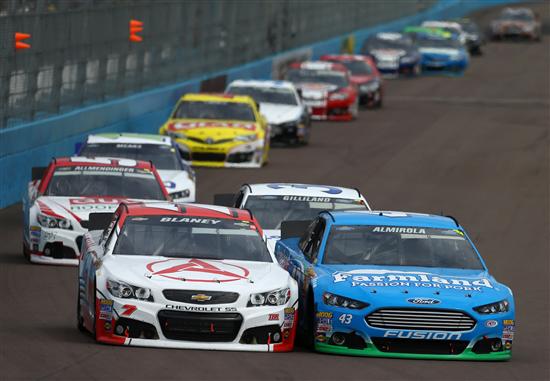
Two races down in the 2013 season, two different tests for the new “Gen-6” racecar are complete. Already, opinions from drivers and fans are pouring in regarding the style of racing that the new car provides.
“I think these cars probably drive easier than any race car I’ve ever driven in my life by themselves, and probably the hardest to drive of any race car I’ve ever driven in traffic,” said Brad Keselowski following fourth place finish Sunday at Phoenix.
“I think we can get that a little bit better and probably make them a little more difficult to drive by yourself, but a little easier to drive in traffic, we could have even better races than what we had today.”
When creating the Gen-6 racecars, NASCAR wanted to create manufacture identity and at the same time improve the quality of racing at in the Sprint Cup Series after six full seasons with the car formerly known as the “Car of Tomorrow” in which fans weren’t thrilled by the type of racing they saw.
In order to try to improve the on-track product, NASCAR increased the amount of downforce on the cars, which in theory makes the car easier to handle for the driver and would create more side-by-side racing in the process much like it did in the “Gen-4” racecar.
One of the biggest problems with the “Gen-4” was that when a driver would get close to a car in front of them, the car would develop what is known as an “aero push” which made the car difficult to drive in traffic, placing an emphasis on being and staying up front throughout the race.
During Sunday’s race at Phoenix, drivers eluded that the aero push may be back after only 12 lead changes among nine drivers.
“I think it was just a matter of where you cycled on the pit stops as far as when everybody figured out you had to take two tires than four. It was just a matter of figuring out where in the cycle you were and whether you could get back the track position,” said Tony Stewart post-race.
“You could still pass. It was harder to pass the further back you were.”
Typically Phoenix has been a track where passing has proven to be difficult, regardless of the car, tire or track configuration.
“This track is tough, flat and doesn’t lend itself to the best racing that we have on the series,” said Jeff Gordon.
“I thought on the long run when the tires gave up a little bit you could start searching around, making some moves. Track position was key. We knew that coming in.
” It was definitely challenging this is probably not the best track to judge by.”
Next Sunday’s race at Las Vegas Motor Speedway may play more into the new car’s hands. Being a high-downforce track with multiple lanes drivers can race on, it’s another different challenge than the previous two races.
“I think next week in Vegas we have a track that has multiple lanes and we’ll see some great side-by-side racing,” said Jimmie Johnson who finished second on Sunday.
“The garage area and the teams and owners and the competition side of NASCAR have worked so hard to make these cars equal and we keep changing and jumping through hoops, new chassis, new bodies, new this, new that. The cars are equal and when they’re equal you’re going to have a situation like this.
“What we need now is the racetracks to consider the asphalt they’re putting down and even reconfigure the lanes so that we have somewhere to race.”
So, after two races, we really haven’t learned anything that we didn’t already know. The “Gen-6” is still a learning process with kinks to be worked out.





RT @OnPitRoad_: NEW: What to make of the Gen-6 early on #NASCAR http://t.co/e05dwEVYYE